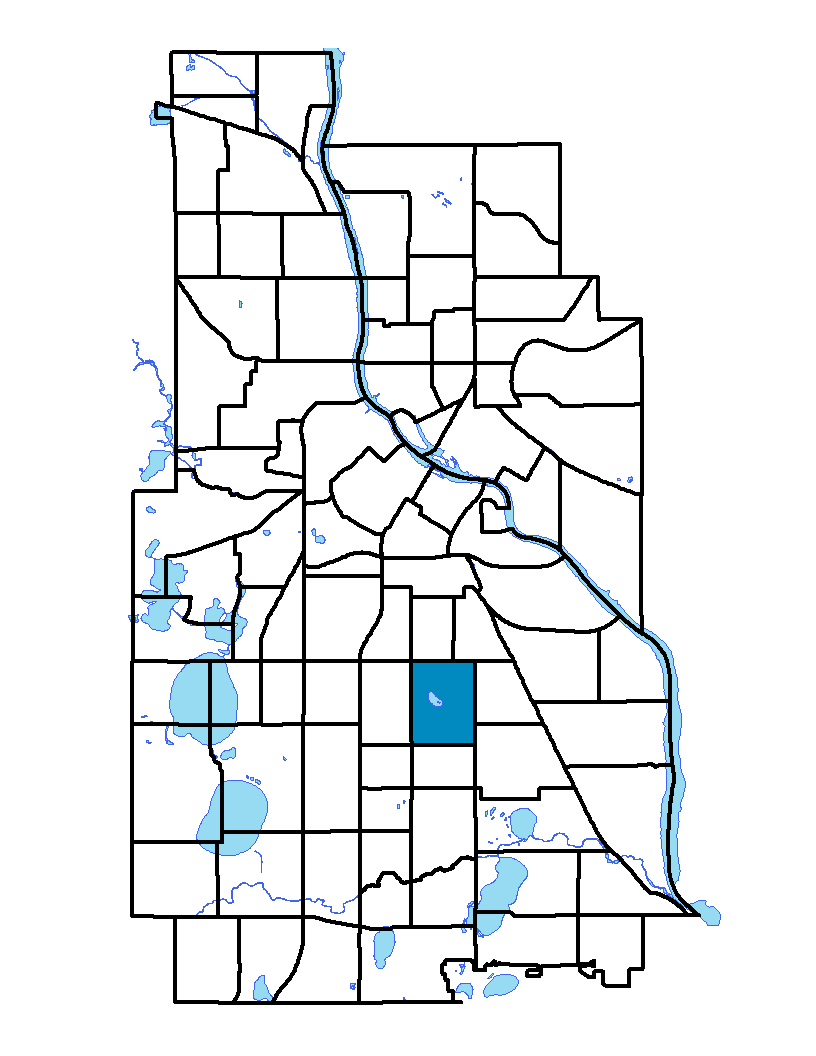Powderhorn Park is mainly a residential neighborhood, where single-family houses and narrow residential lots are prevalent. The neighborhood was annexed by the City in 1887 and most of the housing was built by 1920. In 1986 its southern boundary was moved from 36th Street to 38th Street. The Powderhorn Park neighborhood, on Minneapolis' south side, takes its name from Powderhorn Park lake, a small lake shaped like a powder horn. People gather for cultural activities and large community events in the park. The neighborhood is bound on the north by Lake Street, on the east by Cedar Avenue South, on the south by 38th Street East, and on the west by Chicago Avenue.
To learn more about the neighborhood association visit: www.ppna.org
Indicator Details
|
Indicators |
Primary Domain | Indicator Value | Rank | Tier |
|---|---|---|---|---|
| Access to Mainstream Financial Services | Economic Health | 34.5% | 63 | Bottom |
| Access to Parks and Open Space | Natural Areas | 13.9% | 20 | Top |
| Adult Educational Attainment | Educational Opportunities | 81.9% | 65 | Bottom |
| Age of Housing | Housing | 94.7% | 70 | Bottom |
| Blood Lead Levels in Children | Housing | 6.9% | 70 | Bottom |
| Business Retention | Economic Health | 1.1% | 53 | Middle |
| Chronic School Absence | Health Systems and Public Safety | 70.7% | 42 | Middle |
| Commute Mode Share | Transportation | 32.6% | 35 | Middle |
| Employment Rate | Employment Opportunities | 70.4% | 34 | Middle |
| Excessive Housing Cost Burden | Housing | 35.2% | 60 | Bottom |
| Food Desert | Neighborhood Characteristics | 50.0% | 11 | Top |
| High School Graduation Rate | Educational Opportunities | -% | - | Data N/A |
| Household Transportation Costs | Transportation | 16.2% | 34 | Middle |
| Local Business Vitality | Economic Health | 55.8% | 37 | Middle |
| Long-Term Unemployment | Employment Opportunities | 7.2% | 61 | Bottom |
| Low Birth Weight | Health Systems and Public Safety | 10.3% | 62 | Bottom |
| Motor Vehicle Collisions | Health Systems and Public Safety | 2.3 | 23 | Top |
| Offsite Alcohol Outlets | Neighborhood Characteristics | 1 | 6 | Top |
| Pedestrian Connectivity | Transportation | 160.9 | 21 | Top |
| Preschool Enrollment | Educational Opportunities | 47.8% | 45 | Middle |
| Preventable Hospitalizations | Health Systems and Public Safety | 2.7 | 42 | Middle |
| Proximity to Brownfield Sites | Environmental Hazards | 2.5% | 30 | Middle |
| Proximity to Superfund Sites | Environmental Hazards | 12.3% | 41 | Middle |
| Public Assisted Households | Employment Opportunities | 32.2% | 60 | Bottom |
| Reading Proficiency | Educational Opportunities | -% | - | Data N/A |
| Residential Mobility | Social Cohesion | 79.1% | 43 | Middle |
| Residential Proximity to Traffic | Environmental Hazards | 0.0% | 1 | Top |
| School Proximity to Traffic | Environmental Hazards | 0.0% | 1 | Top |
| School Readiness Scores | Educational Opportunities | -% | - | Data N/A |
| Toxic Releases from Facilities | Environmental Hazards | 0.0% | 1 | Top |
| Transit Accessibility | Transportation | 370.3 | 33 | Middle |
| Travel Time to Work | Employment Opportunities | 23.3 minutes | 60 | Bottom |
| Tree Cover | Natural Areas | 28.2% | 45 | Middle |
| Vacancy Rates | Housing | 7.6% | 47 | Middle |
| Violent Crime | Health Systems and Public Safety | 54.3 | 51 | Middle |
| Voter Participation | Social Cohesion | 29.6% | 32 | Middle |
| Walkability | Neighborhood Characteristics | 71 | 24 | Top |

